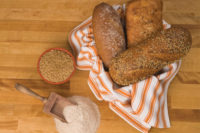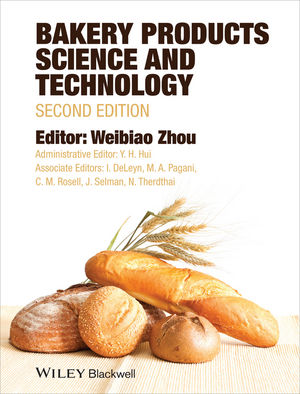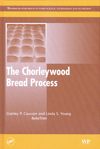Staying Sharp at Price Chopper
By Mary Ellen Kuhn
Call the start of Tom Tomaselli’s 15-year career at the Schenectady, N.Y.-based Price Chopper supermarket chain a clear-cut case of “mother knows best.”
The 30-year-old candy category manager has been
employed by Price Chopper for nearly half of his life thanks to a mom eager
to have her teenage son stay busy and productive. “On my sixteenth
birthday, my mother dropped me off at the [neighborhood] store and said,
‘Go bag some groceries,’” Tomaselli relates with a quiet
grin.
He took it from there, working for the family-owned
chain while finishing high school and for all but one semester of his four
years at Siena College near Albany, N.Y., where he majored in marketing. By
the time of his college graduation, Tomaselli was assistant produce manager
in one of Price Chopper’s 100-plus supermarkets located throughout
six states in the Northeast. From there, he moved quickly up the ranks to
produce manager, assistant store manager and then into the store manager
training program before opting to go the corporate route, with positions
first as a private label buyer/merchandiser and then junior category
manager in the health/beauty sector before a category manager slot opened
up in grocery.
“My first desk as a category manager in grocery,
I had baking, boxed prepared foods, candy, canned prepared meals, soup,
peanut butter and jelly,” Tomaselli continues. “I had those
categories, and I did real well with candy, so when they promoted me to the
DSD (direct store delivery) desk, they said, ‘Well, you’re
going to keep candy, too.’” His current title is category
manager, DSD.
Two and a half years later, Tomaselli continues to
enjoy the challenge of balancing the responsibilities of the high volume
DSD segment with the SKU-intensive candy category. Of candy, he reflects,
“It’s definitely a tough category, but it’s fun.
There’s always something new. You’re always trying to have the
right variety to maximize sales in a limited amount of space.
“Customers are looking for all kinds of
varieties,” he continues. “It’s always difficult to have
the best of the best on the shelf and to keep it organized and the
presentation neat.”
Despite a more-than-full plate, Tomaselli reports that
he’s kept candy category sales growing in his tenure as category
manager. “That’s why I still have it,” he says, his wry
humor again evident.
Candy makes a statement
It’s not hard to find the candy aisle in a Price
Chopper store. A clever and colorful aisle header akin to an old-time candy
store awning draws the shopper’s eye.
The inline candy set averages 28 linear feet in the
regional chain’s stores, but that’s not the only place
you’ll find candy. Tomaselli is a big believer in secondary locations
for merchandising candy.
“I think I’ve been a little more
aggressive with off-shelf displays and clip strips … trying to
capture the incremental, the impulse sales from customers because we have
the foot traffic,” he muses when pressed to identify some of his
candy category growth strategies.
“The clip strips, we try to tie them into high
velocity sections like cereal, juice and soda and the snack aisle,”
he continues. “And then we try to do our off-shelf displays in the
perimeter in the hot spots of the store.
“We utilize a quad basket display, and it works
really well,” says Tomaselli, describing a configuration of four wire
baskets.
He’s also a believer in candy shippers —
used in moderation — and also typically placed in store perimeters.
“We try to limit ourselves to a couple in the store per week for
candy,” he continues. “We try not to go overboard.
There’s a point where it’s clutter. … There’s a
point where you are trying to push too hard, and you’re annoying the
customer.”
At Price Chopper, the strategy is definitely not about
annoying the customer. Despite the image its name might evoke, Price
Chopper stores are not bare bones retail outlets competing mainly on price.
The retailer counts respected grocery chains such as Wegmans, Hannaford,
Stop & Shop, and Shaw’s as key competitors in markets throughout
the Northeast, according to category manager Tomaselli.
The supermarkets range in size from 40,000 square feet
to about 100,000 square feet. The chain strives to set itself apart in the
marketplace with attractive, ample bakeries, delis and produce departments,
consumer-friendly food courts and amenities that may include everything
from childcare centers to hardwood floors.
“We try to be the perishables leaders,”
says Tomaselli. “That differentiates us from the big-box guys.”
What’s hot?
Premium/gourmet belongs near the top of the list of
red hot confectionery segments at Price Chopper, Tomaselli reports, noting
that vendors including Lindt and Ghirardelli racked up especially strong
sales during this year’s Christmas season.
In addition, the chain has been courting lovers of
upscale sweets with its private label Central Market offerings attractively
packaged in small, square plastic tubs. (The Central Market name, which
dates back to1933, was used before the chain unveiled the Price Chopper
banner for its supermarkets.) Sweet Finnish licorice, yogurt-covered
raisins, espresso beans covered in dark chocolate, assorted Jelly Belly
jelly beans and milk chocolate almond toffee were among the many on-shelf
options at the time of Confectioner’s store visit earlier this year.
Tomaselli doesn’t hesitate to get a bit
experimental with these items. “We’re always changing the SKUs,
trying to keep it fresh,” he says. … “Some of them work
well, and some of them, maybe the customer wasn’t ready. So
we’ve changed it a few times. We’re not afraid to say,
‘Hey, this didn’t work,’ and then try something
new.”
Dark chocolate is “on fire,” according to
Tomaselli. “It just keeps growing. … With all the publicity on
the antioxidants and being better for you, it’s taking off,” he
muses. At the front end, Hershey’s Special Dark has become a star
performer in recent months, nearly catching up with the sales of the
mainstream candy bar best sellers, he says.
Price Chopper’s yellow and green channel
dividers call attention to natural and organic candy and snack SKUs,
including Green & Black’s organic chocolate bars, GeniSoy soy
nuts, and Newman’s Own Organic Peanut Butter Cups. Natural and
organic candy hasn’t taken off like premium and gourmet, says
Tomaselli, but he’s a believer in this segment’s potential.
“I think in the future it’s a direction we need to go
in,” he reflects.
Natural and organic confections have a home within a
designated department in some Price Chopper stores, while in others, the
products are integrated in-line. The latter approach may be less
intimidating to consumers and make them more willing to sample an item or
two, Tomaselli speculates. “The consumer might think, ‘Hey,
it’s only 50 cents more, I’ll try it,’” he
observes.
Portion-controlled snack and candy products also merit
a spot on the chain’s list of power performers. Of 100-calorie packs,
Tomaselli says, “They’re doing really well, too, across all the
segments — not just candy, but across cookies, across salty snacks,
chips and such, it’s been like an explosion. We’ve been having
growth in the on-the-go stuff, so it kind of goes hand in hand with
that.”
In the bag
“We have a really strong private label program
throughout the store,” says Tomaselli. “The goal is quality
first, price second. We want to offer the customer the best value on
national brand quality products.”
In addition to the upscale Central Market SKUs, the
chain offers a large assortment of more mainstream Price Chopper peg bags
— with non-chocolate items priced at $1 and chocolate products at
2/$3.
Mayfair Sales/Tzetzo Brothers, Buffalo, N.Y., handles
the peg bag program for the chain, working closely with the Price Chopper
team. “We’re very in touch with what we put in the bag,”
says Tomaselli. “We’ve had cuttings where we’ve had 20
different orange slices laid out, and we’re like, ‘We want this
flavor, we want this size and shape.’”
Tomaselli gives Mayfair top marks. “They
don’t limit us. They don’t say, ‘This is what we’ve
got. This is what we’re putting in the bag.’ They work with us.
They’re a great supplier.”
With its strong assortments, attentive service and
well designed stores, the Price Chopper chain demonstrates that same sort
of commitment to addressing the needs of its customers.
The Price Chopper Story
Owned and operated by the Golub family for more than
70 years, the Price Chopper chain has played a key role in shaping the U.S.
supermarket industry. In 1937, founders Bernard and William Golub met with
other supermarket leaders to forge a national industry association now
known as the Food Marketing Institute. Today, Bernard’s son, Lewis,
is chairman of the board, and Neil, William’s son, is CEO and
president. In addition, a third generation of Golub family members play key
roles in the grocery company.
The family prides itself on the collegial corporate
climate. Since 1932, the Price Chopper Web site states, the company has
never lost a day of operation due to either labor disputes or strikes, and
its 20,000 employees own 55 percent of the company’s privately held
stock.
The company describes the supermarkets’
positioning as “low price/high quality.”
Each quarter Price Chopper reduces prices on a
selected group of 4,000+ items, which remain on sale throughout that
quarter. That is in addition to regular weekly price promotions.
Price Chopper currently operates 115 stores in New
York, Massachusetts, Vermont, Connecticut, Pennsylvania and New Hampshire.
On the Job with Tom Tomaselli
Less than a decade after his college graduation, Tom
Tomaselli has mastered a skill set that frequently eludes even more
seasoned professionals — multi-tasking, time management and setting
priorities.
Tomaselli is convinced that his early years working at
store level have been instrumental to the success he’s had at
headquarters. “I think just growing up in the stores and really
having the background and the experience of what happens at store level
[has been helpful.] That’s where it really all happens.”
Another secret to his success: He’s an early
bird, typically arriving at the office by 6:30 a.m. or 7 a.m., which allows
him to get a running start on the day before the phone calls start.
Tomaselli learned early on that he works best under
pressure. “My first semester [in college], I didn’t work [at
Price Chopper] at all,” he says. “I figured I was just going to
go to school and pay attention, but I had too much free time. Then I went
right back to work, and my grades improved drastically.”
He maintains a sense of urgency on the job.
“There’s so much to do,” he observes. “If you
don’t attack everything right away, it just builds up, and then you
never get out from under it.”
Outside the office, he’s a self-professed
“motor head,” who enjoys his cars and trucks. He also offsets
long hours at his desk by logging plenty of gym time and — weather
permitting — going snowmobiling.








